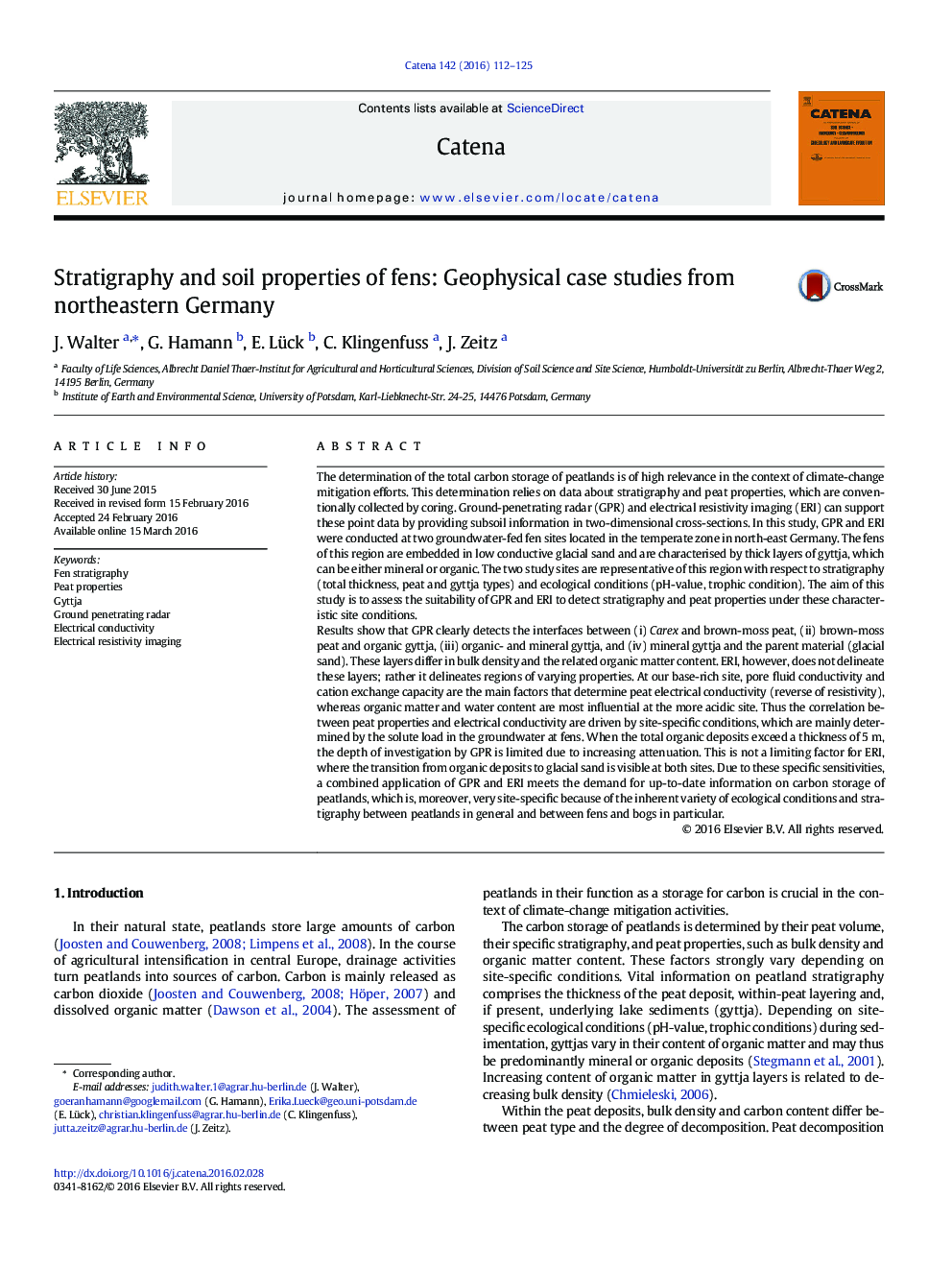| کد مقاله | کد نشریه | سال انتشار | مقاله انگلیسی | نسخه تمام متن |
|---|---|---|---|---|
| 6407831 | 1629210 | 2016 | 14 صفحه PDF | دانلود رایگان |
- Peatland stratigraphy and peat properties are mapped using an integrated geophysical approach.
- Ground penetrating radar is able to delineate layers of different peat and gyttja types.
- Surveys of electrical conductivity are able to map the distribution of different peat properties.
- Site-specific conditions determine which peat properties are associated with conductivity.
The determination of the total carbon storage of peatlands is of high relevance in the context of climate-change mitigation efforts. This determination relies on data about stratigraphy and peat properties, which are conventionally collected by coring. Ground-penetrating radar (GPR) and electrical resistivity imaging (ERI) can support these point data by providing subsoil information in two-dimensional cross-sections. In this study, GPR and ERI were conducted at two groundwater-fed fen sites located in the temperate zone in north-east Germany. The fens of this region are embedded in low conductive glacial sand and are characterised by thick layers of gyttja, which can be either mineral or organic. The two study sites are representative of this region with respect to stratigraphy (total thickness, peat and gyttja types) and ecological conditions (pH-value, trophic condition). The aim of this study is to assess the suitability of GPR and ERI to detect stratigraphy and peat properties under these characteristic site conditions.Results show that GPR clearly detects the interfaces between (i) Carex and brown-moss peat, (ii) brown-moss peat and organic gyttja, (iii) organic- and mineral gyttja, and (iv) mineral gyttja and the parent material (glacial sand). These layers differ in bulk density and the related organic matter content. ERI, however, does not delineate these layers; rather it delineates regions of varying properties. At our base-rich site, pore fluid conductivity and cation exchange capacity are the main factors that determine peat electrical conductivity (reverse of resistivity), whereas organic matter and water content are most influential at the more acidic site. Thus the correlation between peat properties and electrical conductivity are driven by site-specific conditions, which are mainly determined by the solute load in the groundwater at fens. When the total organic deposits exceed a thickness of 5Â m, the depth of investigation by GPR is limited due to increasing attenuation. This is not a limiting factor for ERI, where the transition from organic deposits to glacial sand is visible at both sites. Due to these specific sensitivities, a combined application of GPR and ERI meets the demand for up-to-date information on carbon storage of peatlands, which is, moreover, very site-specific because of the inherent variety of ecological conditions and stratigraphy between peatlands in general and between fens and bogs in particular.
Journal: CATENA - Volume 142, July 2016, Pages 112-125
